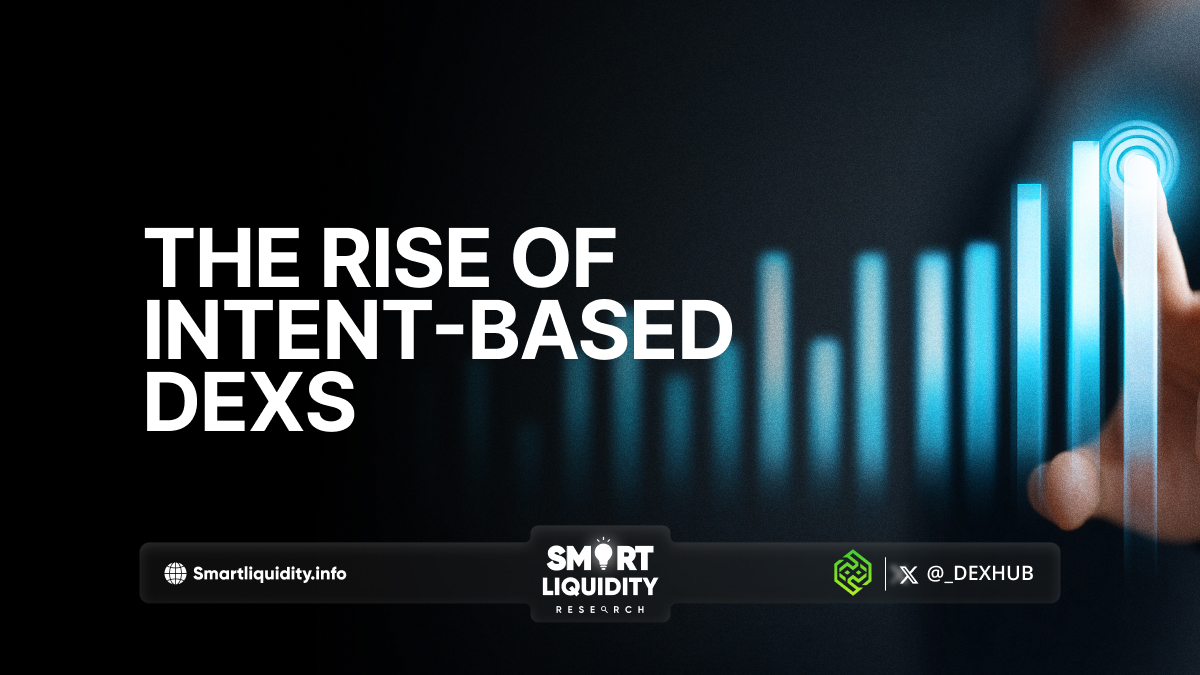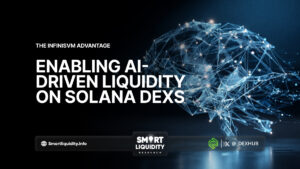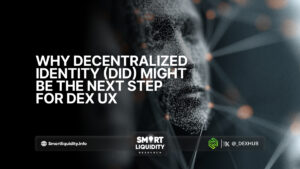The Rise of Intent-Based DEXs


Decentralized exchanges (DEXs) have come a long way since the early days of Uniswap. What started as simple peer-to-peer token swaps has now evolved into a complex and rapidly maturing ecosystem. At the forefront of this evolution is a new paradigm: intent-based DEXs.
Unlike traditional order book or AMM (Automated Market Maker) models, intent-based DEXs focus not just on what you want to trade, but why—your trading intent. This subtle shift is unlocking powerful new capabilities in DeFi, making trading more efficient, expressive, and user-friendly.
What Are Intent-Based DEXs?
In traditional DEXs, users submit exact trade parameters—like swapping token A for token B at a specified rate or slippage. This is known as an imperative model: you tell the protocol exactly how to execute your trade.
Intent-based DEXs flip this model. Instead of saying how a trade should happen, users declare what they want to achieve. For example, “I want to sell 100 DAI for the best possible yield within the next 10 minutes.” The protocol (or a decentralized network of solvers) then figures out the best way to fulfill that intent.
This model introduces a powerful abstraction: users don’t need to micromanage execution. Instead, they define desired outcomes, and the network finds optimal paths, whether that’s via swaps, auctions, bridges, or even aggregators.
Why Intent-Based Trading Matters
Intent-based DEXs bring several important benefits:
1. Execution Flexibility
With intents, trades can be fulfilled in a variety of ways—not just through AMMs. The system can aggregate liquidity across DEXs, batch transactions, or leverage MEV protection. This flexibility often leads to better execution prices and reduced slippage.
2. Better UX
Trading on DEXs often requires knowledge of gas fees, slippage tolerance, and token routing. Intent-based systems abstract away that complexity, letting users focus on outcomes rather than mechanics.
3. MEV-Resistant Design
By outsourcing execution to trusted or decentralized solvers, intent-based models can minimize value extraction from miners or validators (MEV). Projects like CowSwap have shown how off-chain order matching with on-chain settlement can dramatically improve fairness.
4. Composability and Innovation
Intents are modular. This means new types of trades, such as complex multi-leg strategies or cross-chain swaps, can be defined as higher-level intents. Developers can build apps that use intents without needing to reinvent execution logic.
Key Players in the Space
The intent-based model is already being pioneered by several standout projects:
CoW Protocol – One of the earliest and most well-known intent-based DEXs, matching orders via batch auctions and solver competition.
Anoma – A research-driven project pushing a generalized intent-centric architecture for decentralized applications.
Uniswap X – Uniswap’s next-gen protocol introduces off-chain intent submission with decentralized fill mechanisms.
Essential – A modular execution layer that coordinates between users, solvers, and intents across DeFi ecosystems.
These protocols are building the foundations for a more intelligent, adaptive DeFi infrastructure.
Challenges and Open Questions
Like any emerging technology, intent-based DEXs face their share of hurdles:
Trust and decentralization: Many systems rely on solver networks. Ensuring these are open, competitive, and resistant to manipulation is critical.
Security: More abstraction means more surface area for bugs and edge cases. Intent parsing and execution logic must be extremely robust.
Standardization: Without common intent formats, the ecosystem risks fragmentation. Efforts like EIP-7527 aim to standardize intent interfaces across chains.
The Future: A DeFi Layer for Expressiveness
We’re witnessing a paradigm shift—from imperative to declarative trading. Intents are more than a technical upgrade; they represent a shift in how DeFi users interact with protocols. As this model matures, we can expect intent-based systems to power not just DEXs, but lending, yield strategies, NFT marketplaces, and beyond.
In the near future, trading on DeFi might feel less like writing code—and more like giving a command to an intelligent assistant. “Swap this for that, at the best price, by tonight.” And it just works.
TL;DR:
Intent-based DEXs are redefining decentralized trading by focusing on what users want to achieve, not how it gets done. With benefits like better execution, improved UX, and MEV resistance, this model is rapidly gaining traction—and may soon become the default layer of interaction for DeFi.
REQUEST AN ARTICLE
Disclaimer:
This article is for informational purposes only and does not constitute financial advice. Readers are encouraged to conduct their own research and consult with a financial professional before making any investment decisions.




